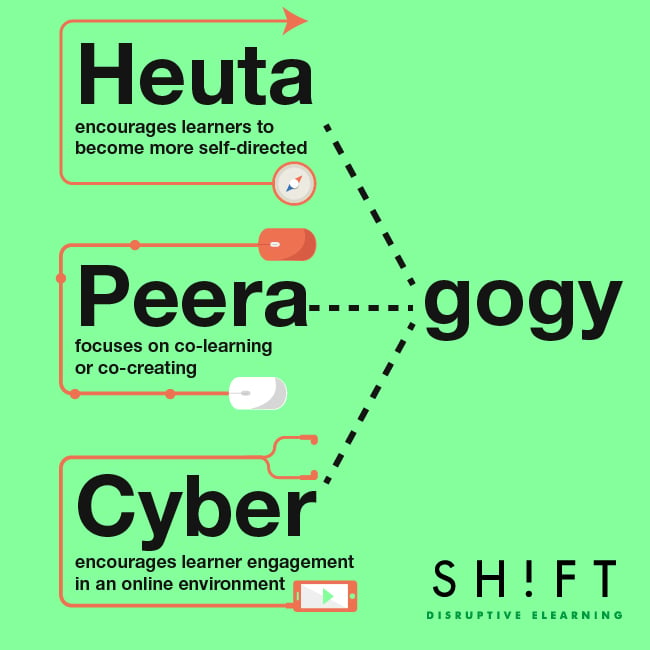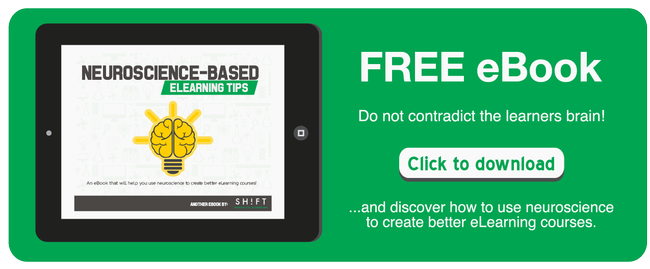Learning is evolving—in large part due to the Internet. Now you may already know about this. It's a fact you can't miss thanks to the proliferation of mobile educational apps, and courses suited to on-the-go learning.
But there are three particular forces that affect the way we all learn online. These forces which are basically distinct features of new technologies demand that we should also continue to evolve as learning professionals. They include:
- The rise of greater connectivity and seamless networking in education,
- The development of global education as an approach to interdisciplinary study, and
- The virtualization of information through computer networking.
With these in mind, it's time for us to move to Education 3.0. While Education 2.0 allows for greater interaction between teacher and student, student and content/expert, and among students, Education 3.0 emphasizes a more connectivist approach to learning and teaching. These three "gogies" of effective online learning will help you get a clearer picture.

1) Heutagogy
Heutagogy, a concept developed in 2000 by Stewart Hase, refers to the study of self-determined learning. This approach focuses on the role of online instructors as a coach, a mentor or facilitator and further encourages learners to become more self-directed.
The concept has lain dormant for years but has resurfaced with renewed interest alongside the rise of Web 2.0 technologies that embraced a learner-centered approach. While effective heutagogy has roots in androgogy, it doesn't just refer to learning itself. It expands upon androgogy's self-directed learning practices by focusing on metacognition and how people learn effectively online.
Furthermore, heutagogy recognizes the need for flexibility when it comes to learning, where the instructor acts as mentor or tutor that provides resources but the ultimate power to design the actual course rests in the learner. In other words, Heutagogy gives the learner the power to determine what and how they learn.
Embracing heutagogy is especially important in today's information-rich world. It's the same learning environment that changes at a quite rapid pace. Traditional learning methods and strategies are not only inadequate, many have already become obsolete. The need for immediacy and flexibility in learning justifies the need for heutagogy.
There are several ways to effectively implement heutagogy in eLearning enviornments. So far the most common is to offer extremely self-directed exercises and practices that promote critical thinking and active learning in more problem-focused, professional and experiential contexts.
Recommended resources:
- Heutagogy: designing for self-directed learners
- Slideshare presentation: What is Heutagogy?
- All About Heutagogy (collection of resources)
- How Heutagogy is Conducive to Distance Education, Web 2.0, and Social Media
2) Peeragogy or Paragogy
In contrast to the deliberately ambiguous and inclusive term “Paragogy,” “Peeragogy” aims to be direct and more concrete.
Put simply, both words refer to peer-based learning where peers or group of learners learning together and teaching each other. So feel free to use them interchangeably.
The key principle that drives Peeragogy is co-learning or co-creating. Participants are able to use digital tools to co-construct knowledge and connect with each other. They are not merely teachers or learners but are rather co-creating together in a social, active and continuous process. It's actually an ancient process. We humans, after all, have always learned better together.
Paragogy or Peeragogy is the exact opposite of a lecture and other one-directional approaches to learning and teaching. The fact that it de-centralizes the approach to learning is actually a powerful thing.
For one, it leverages the learners' own expertise. Everyone can bring previous experience and knowledge they have to the table. It further motivates learners and boosts their drive to improve themselves and contribute to others' learning.
Learning is more likely to occur when each member of the group plays both helper and learner. Peers working together is engaging. What's more, peeragogy leverages context-specific issues and allows adults to focus on real-world issues, that is, their own concerns and circumstances. This increases the potential for transfer of learning and as well as encourages sustained engagement among students.
Recommended resources:
3) Cybergogy
The two previous “gogies” sound a bit familiar. But what about “Cybergogy?” The term itself indicates that it has something to do with “cyber” or the Internet. And indeed it has. It focuses on helping adults learn effectively in a virtual environment.
At its core is the awareness that face-to-face learning strategies may not apply to distance education and virtual media. This makes Cybergogy uniquely applicable to online instruction. It combines the fundamentals of Pedagogy and Andragogy and considers the unique benefits of technology-enabled learning for better learning results.
Also, its model is underpinned by a social constructivist epistemology where the learner constructs and internalizes knowledge, which is then sustained by social processes. Knowledge and social interaction, therefore, are inseparable and may lead to enhance collaboration.
Minjuan Wang and Myunghee Kang, who coined the term, posited that it's particularly important to encourage learner engagement and enablement in an online environment. They said learners should be fully—that is behaviourally, emotionally and intellectually—involved in their learning tasks.
For this to happen, Cybergogy may require both student and instructor into a relationship where the instructor is no longer the only source of knowledge. It places the control of knowledge directly in the hands of the learner—which is extremely valuable for self-directed learners.
References:
Education 3.0 and the Pedagogy (Andragogy, Heutagogy) of Mobile Learning
Hase, S. and Kenyon, C. (2001). Moving from andragogy to heutagogy.









